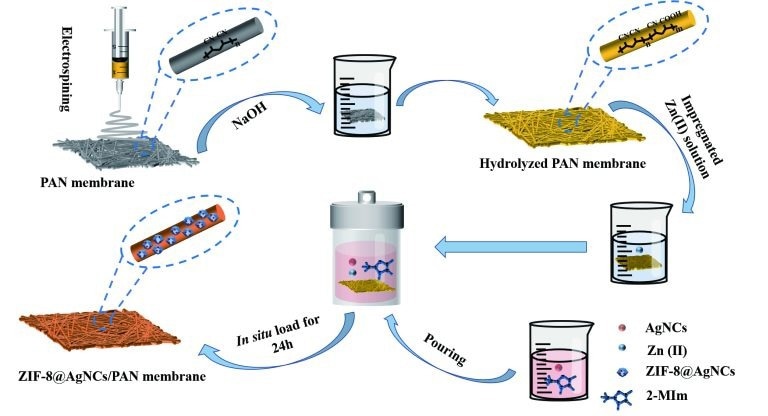Oxygen level reduction occurs when oil contaminates water by creating a film that initiates toxic substances. This could result in the death of aquatic animals and plants, contaminate soil, and eventually endanger human health.
 Schematic diagram of the preparation of the nanofiber membrane. Image Credit: Chen et al.
Schematic diagram of the preparation of the nanofiber membrane. Image Credit: Chen et al.
Isolating oil from polluted water is of great significance. Current methods could be costly and challenging, and a few might introduce additional pollutants into the system. For instance, membrane materials could serve as a barrier to intercept oil, but they are low in efficiency and inappropriate for long-term use.
In Biointerphases, an AVS journal published by AIP Publishing, Chinese researchers developed a fabrication technique to increase the longevity and efficacy of membrane separation technology. The technology is over 99% effective at isolating a petroleum ether-in-water emulsion.
The team group created a nanofibrous membrane with electrospinning, in which a liquid polymer droplet was electrified and stretched to create fibers. They raised the membrane surface’s roughness by loading it with silver nanoparticles.
In water, this rough surface encourages a stable layer of water, which serve as a barrier to prevent oil droplets from penetrating the membrane.
This hydration layer efficiently impedes the passage of oil droplets, reducing membrane pollution and enhancing the composite membrane’s permeability and separation efficiency.
Jindan Wu, Study Author, Zhejiang Sci-Tech University
Silver nanoparticles help improve the antibacterial properties of the membrane. Integrating them reduces the risk of membrane corrosion that microorganisms could cause.
We have discovered that the membrane’s surface roughness and hydration layer strength are critical factors that impact its separation performance and anti-fouling ability. This concept of depositing particles on nanofibrous membranes also has potential for broad applications with other materials.
Jindan Wu, Study Author, Zhejiang Sci-Tech University
The present output abilities of this fabrication method are comparatively low. However, the group believes that developing such materials will result in an innovative solution for treating water pollution.
Water pollution is caused by multiple sources, and oily wastewater is just one of them. It is of vital importance to develop materials that can treat for dyes, heavy metals, and bacteria present in water.
Jindan Wu, Study Author, Zhejiang Sci-Tech University